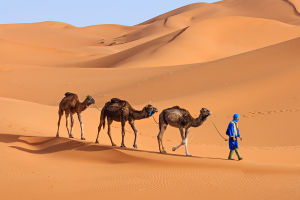Let's take a fascinating journey through our solar system together.
The eight planets—Mercury, Venus, Earth, Mars, Jupiter, Saturn, Uranus, and Neptune—each have their own unique characteristics, forming a diverse and colorful cosmic family. Buckle up and explore their secrets with us!
Mercury: The Tiny Survivor
Mercury, the smallest rocky planet in the solar system, hugs the Sun closer than any other planet. Its surface is exposed to extreme heat, making it feel like standing next to a giant furnace. Despite these harsh conditions, Mercury endures, showing us that resilience exists even in the harshest environments.
Without a protective atmosphere, Mercury's surface faces the Sun's intense radiation directly, almost like a lone traveler braving a storm. Its landscape is rugged, covered with craters and mountains that tell the story of its long history. While it doesn't host water or life as we know it, studying Mercury helps us understand how the solar system formed and evolved.
Venus: The Blazing Mystery
Venus, often called the "Evening Star," is a world wrapped in a thick atmosphere rich in carbon dioxide. This creates a powerful greenhouse effect, trapping heat and raising surface temperatures to hundreds of degrees Celsius—hot enough to melt lead!
Its atmosphere also contains clouds of sulfuric acid, making it extremely hostile to life. Yet scientists are fascinated by Venus because its conditions reveal clues about planetary evolution and the origins of life. Even in such an extreme environment, Venus remains a captivating world worth exploring.
Earth: Our Blue Haven
Earth, our home, is a rare gem in the cosmos. Its atmosphere, water, and moderate temperatures create ideal conditions for life to thrive. The magnetic field acts as a protective shield, guiding charged particles from the Sun to the poles and keeping our planet safe.
Earth's magnetic field also plays a key role in navigation and technology, from ancient compasses to modern satellites. By studying our planet, we gain insights not only into sustaining life but also into understanding other worlds. Protecting Earth is crucial so future generations can enjoy this vibrant blue planet.
Mars: The Red Explorer
Mars, the Red Planet, has fascinated humans for centuries. Its surface is dusty and cold, with a thin atmosphere. Despite its harsh environment, we continue to explore Mars, sending rovers and collecting data to uncover its secrets.
Mars is more than a planet; it's a stepping stone for humanity's future in space. Its unique landscapes, potential water traces, and mysterious terrain inspire scientists and explorers alike. One day, humans might walk its red sands, taking another giant step in exploring the universe.
Jupiter: The Gas Giant
Jupiter, the largest planet in the solar system, is a giant gas ball with an incredibly strong magnetic field. Its colorful clouds and turbulent storms, especially the Great Red Spot, a storm that has raged for centuries, make it a spectacular sight.
Jupiter's many moons each have unique characteristics, from icy surfaces to volcanic activity, forming a miniature solar system around the giant planet. Studying Jupiter and its moons provides valuable insights into planetary systems and the forces shaping them.
Saturn: The Ringed Beauty
Saturn is famous for its stunning rings and numerous moons. Its atmosphere, composed mainly of hydrogen and helium, adds to its majestic charm. Some moons, like Titan, have dense atmospheres, making them intriguing subjects for research.
Saturn's rings and moons create a captivating system that continues to attract astronomers and space enthusiasts. Its beauty reminds us of the complexity and wonder of the solar system.
Uranus: The Tilted Blue
Uranus is striking with its pale blue color, caused by methane in its atmosphere. Its extreme axial tilt leads to unusual seasonal changes, making the planet a unique subject of study.
The thick clouds of methane reflect sunlight in a way that creates its stunning blue-green hue. Uranus challenges our understanding of planetary formation and climate dynamics, reminding us that the universe is full of surprises.
Neptune: The Distant Blue
Neptune, the farthest planet, has a deep blue glow due to methane and hydrogen in its atmosphere. Its cold temperatures and strong winds create a dynamic and mysterious world.
Neptune is still full of mysteries, from its internal structure to its extreme climate. It's a planet that sparks imagination, inspiring stories and scientific exploration alike.
The Cosmic Family
These eight planets each tell their own story—from the scorching Mercury to the icy Neptune, from life-filled Earth to mysterious Mars. Together, they form a vibrant solar system full of diversity and wonder.
Lykkers, exploring these planets helps us understand the universe and our place in it. Let's keep our curiosity alive and continue this cosmic adventure together!


